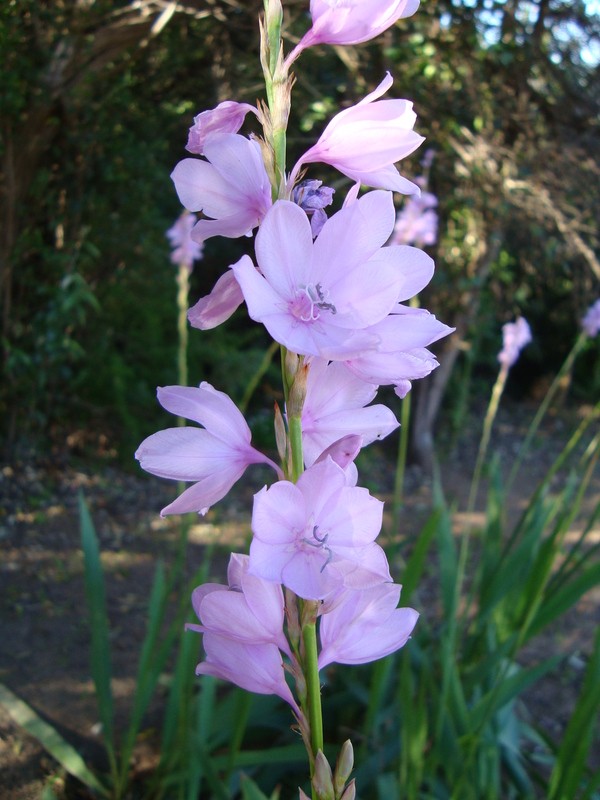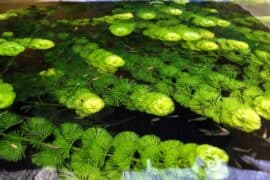Fragrant bugle-lily
(Watsonia marginata)

Description
Watsonia marginata is a species of flowering plant in the family Iridaceae known by the common name fragrant bugle-lily. It is native to the Cape Provinces of South Africa, but it is well known as an ornamental plant grown in gardens for its showy spikes of flowers. Its native range is an area with winter rainfall and dry summers. It is a perennial herb growing from a corm and growing to a maximum height well over one metre when in flower, sometimes reaching two metres. Each corm produces three or four erect leaves that measure up to 80 cm long by 5 wide. They are blue-green with thickened yellow margins. The inflorescence is a dense spike of 30 to 50 flowers which may be any shade of pink or sometimes dark red or white. The flower is actinomorphic, or radially symmetrical, unlike those of other Watsonia, which are zygomorphic. The flowers are several cm long. Like some other Watsonia, this species can escape cultivation and take hold in the wild as a weedy introduced species in appropriate climates. It can be found in Western Australia and California. Watsonia (bugle lily) is a genus of plants in the family Iridaceae, subfamily Crocoideae. Watsonias are native to southern Africa (South Africa, Lesotho, Eswatini). The genus is named after Sir William Watson, an 18th-century British botanist. Native to South Africa, Watsonia species were introduced as garden ornamentals to Australia in the mid-19th century and were widely grown by the 1940s. In the South-West of Western Australia, six species have become naturalised from garden escapes along rivers, wetlands and seasonally wet ground. In places Watsonia spp. have displaced native understorey flora; concentrations of them create a fire hazard in summer. Watsonia meriana var. bulbillifera is also a weed in New Zealand, Réunion and Mauritius. There are 56 accepted species in southern Africa, with two varieties and about 112 names either unresolved or regarded as synonyms. All are perennial herbs growing from corms and producing erect spikes of showy flowers. Most are fynbos plants, adapted to a Mediterranean-type climate, but some occur along the eastern and inland areas of the country and adapted to a wider range of conditions, mainly continental climate with summer rainfall. Many species occur mainly in the mountains, though some occur in sandy flats and marshy areas.
Taxonomic tree:







